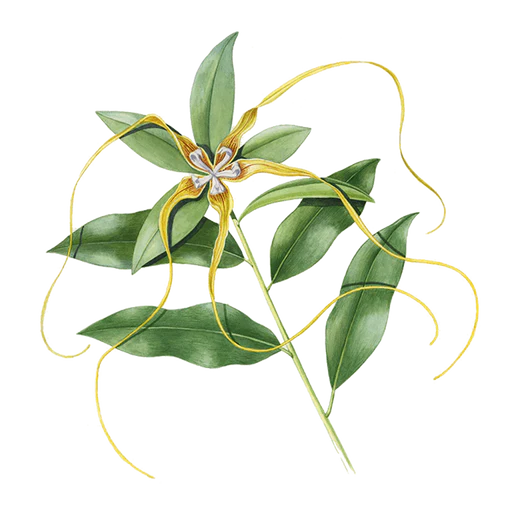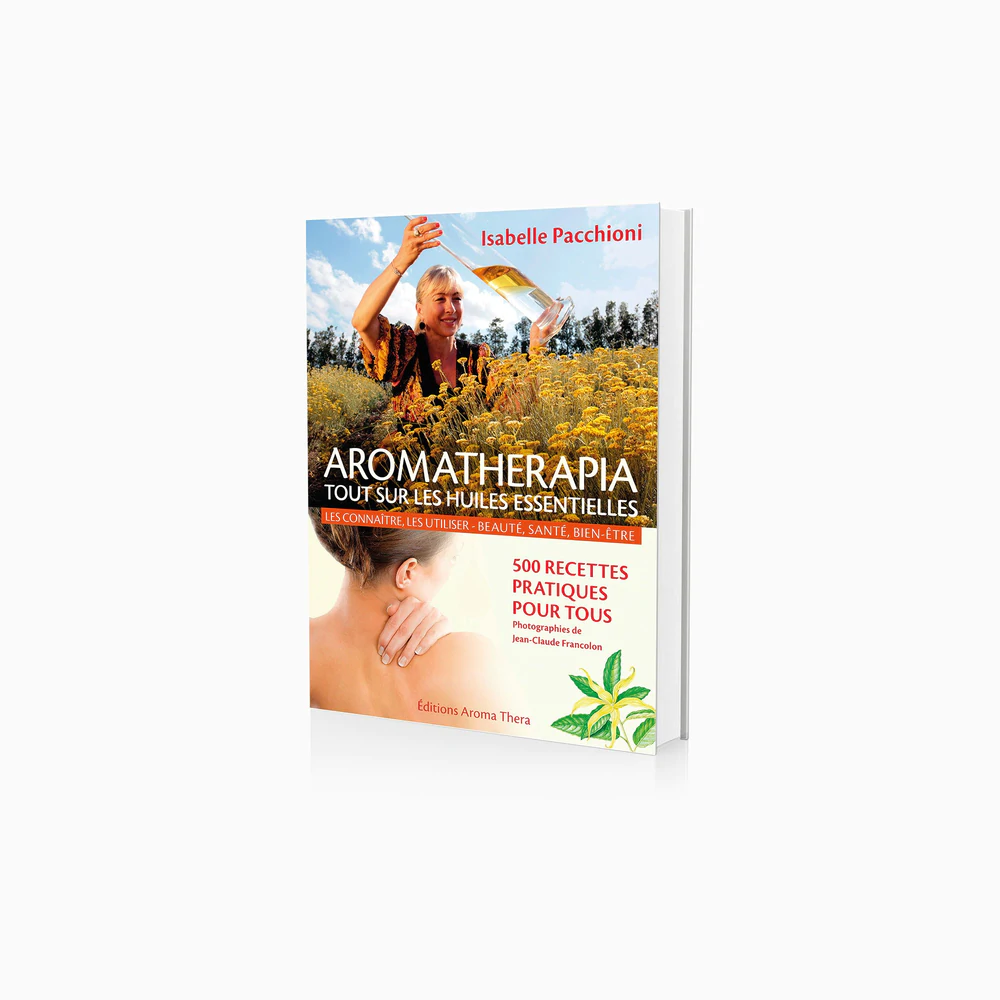
Ylang Ylang
Cananga odorata. f. genuina
Its Malay name means ”flower of flowers”. Its bark is grey; its bright green persistent leaves are arranged regularly along its long branches. The bunches of yellow flowers exhale a penetrating odour. Wild trees can grow to a height of twenty metres, but when cultivated, it is restricted to two or three metres to facilitate harvesting, which starts when the petals wither and their reddish base appears.
Main aromatic molecules: Sesquiterpenes (germacrene-D, α-farnesene, beta-caryophyllene), monoterpenols (linalool), esters (benzyl acetate, benzoate and salicylate).
Family: Annonaceae.
Producing organs: Flowers.
Yield: 1.8 to 2.4 kg of essential oil per 100 kg of flowers.
Equivalence: 1 ml → 31 drops (dosage calculated for a calibrated dropper European Pharmacopoeia).

Bath

Skin application

Oral route

Respiratory route
Rub the lower back with 10 drops of ylang-ylang essential oil diluted in 30 drops of sweet almond vegetable oil. Diffuse in the bedroom 5 drops of ylang-ylang essential oil + 15 drops of white sandalwood essential oil. From 15 years old.
Relaxation and optimism
Pour 2 drops of ylang-ylang essential oil + 5 drops of patchouli essential oil diluted in 2 tablespoons of neutral bath and shower base or skimmed milk into a warm bath. Adults only
Brittle & devitalized hair
Mix 5 drops of ylang-ylang essential oil with 1 tablespoon of coconut and argan vegetable oils in equal parts. Apply to the scalp, lengths and ends of the hair. Leave on for 15 minutes and then wash hair with a mild shampoo. From 12 years old.


AROMATHERAPIA
Extracts from the book ’Aromatherapia – All about essential oils’, by Isabelle Pacchioni, watercolors by Patrick MORIN, Aroma Thera Editions . Extracts from the book ’41 essential oils essential for treating yourself differently’ and ’48 essential oils which every home needs to be healthy’ by Isabelle Delaleu and Isabelle Pacchioni, Publications of the Mandadori France group. Botanical illustrations by Agathe Haevermans.
The properties, benefits and method of use are given for information; they cannot in any case constitute or replace medical information that only health professionals can provide. For any use of essential oils for therapeutic purposes, please consult your GP or pharmacist.
Fri leverans
Fri leverans vid köp över 500kr
Kontakt
Kontakta oss så hjälper vi dig!
Herbarium
Lorem ipsum dolor
Alla våra produkter
Alla produkter finns att hitta på hemsidan